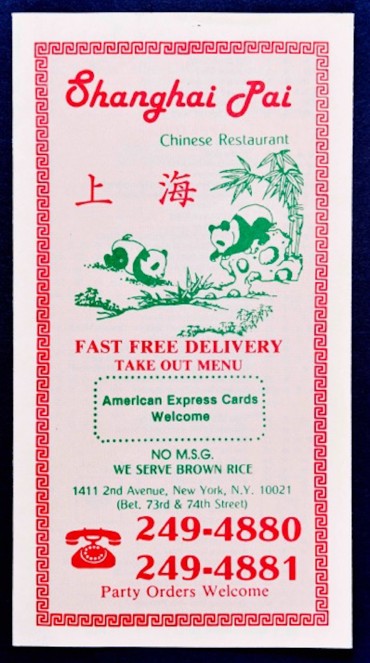Perhaps motivated by the popularity of Chinese takeout for U of T students — shout-out to New Ho King — UTSC recently acquired 10,000 antique Chinese restaurant menus.
Purchased from collector Harley Spiller for $40,000, the collection was recognized by the Guinness World Records in 2005 as being the world’s largest. The arrival of the menus is significant for U of T, as UTSC’s Culinaria Research Centre is North America’s largest food studies research centre according to Professor Daniel Bender. The campus recently kick-started Canada’s first food studies minor program.
Bender, director of the Culinaria Research Centre, foresees the university developing into a global centre for the study of food and society. “We live in a remarkable moment of Canadian history, where we are seeing this remarkable flowering of creative culinary culture,” he said. “So much of that is happening not downtown, where restaurants tend to be cookie cutter, but on the edges of the GTA and the inner suburbs where you find people working incredibly hard to produce incredibly good and interesting food,” Bender explained. “Those kinds of restaurants can provide an insight not only to the economic and social life of diverse communities, but it can also provide a way of thinking about what is really the creative heartbeat of our city.”
On its website, the research centre says it will explore questions relating to the place of food in cultural identity and expression. The menu collection, valued above its purchase price by food studies scholars, will help produce studies that examine the relationship between food, diaspora, and inter-ethnic and inter-cultural contacts.
According to Bender, Spiller chose UTSC for his collection partially because of the location, but also because UTSC plans to make the scholarly collection public. Victoria Owen, chief librarian of the UTSC archives, said the library hopes to share the menus online in the near future.
“Some of them are fragile, some of them are old, some of them have been used, some of the menus were once placemats and some of the menus you can see the food stains and [the way] people have handled them,” Owen said. “We do have to preserve them, and that’s one of the ways of making them widely accessible too, [through] digitization.”
In North America, there are more Chinese restaurants than chain restaurants. According to Bender, “that means we have here, at the University of Toronto, the single largest archival collection of an incredibly economic driver of our daily life and of our economy. The emergence of restaurants — the sheer volume of restaurants — suggests how important public dining has been in diasporic Chinese culture. Not only as a place of community building, but as a sort of economic ambition.”
The menus show how Chinese immigrants could make stable work for themselves even when they faced racist and exclusionary policies. In a shared history, the menus can also provide explanation as to how the idea of American food was conceived.
“You look at the menus and you see things we might not expect to see,” Bender said. “Hamburgers, steaks, things listed as American food. Things listed as Chinese food. Suddenly it seems like there was a very subtle, but careful way in which Chinese or American food was getting presented to Americans, Canadians, at the Chinese restaurants. We might ask ourselves, did French fries — French fries, or hamburgers — become Canadian, or American, at the Chinese restaurants?”
Once the menus are arranged in a digital archive, the collection will become available to everyone for physical and online research.
“Imagine somebody whose parents or grandparents they know worked in a restaurant or owned a restaurant — imagine them being able to find that menu digitized, available in the menu collection,” Bender said. “That’s a really important service that we are providing. At a university, connecting larger communities to its shared past — I can’t think of anything more important for a public university to do as a public service.”
Correction (February 27, 2016): An earlier version of this article misidentified Victoria Owen.


